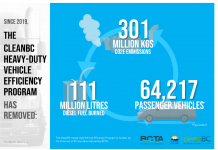It makes the American Transportation Research Institute’s (ATRI) Top Industry Issues report every year. It is spoken about and described by various organisations like Trucking HR Canada. Outside of North America, countries grapple with it. The driver shortage is making headlines throughout various media outlets, and doesn’t look like it’s going away anytime soon.
But are there not enough drivers, or not enough willing to work in the industry? Or, are there enough licenced drivers but too many barriers facing them when trying to enter into the industry? Given the threats to international supply chains that our driver shortage presents, answers to these questions and solutions to the problem are of interest to many.
Steep Training Requirements
Commercial truck drivers in Canada have never had to complete as much training as they do today in many provinces. In Ontario, for example, those wishing to obtain the licence needed to drive a tractor-trailer air brakes combination require at least 103.5 hours of instruction. All four Western provinces require even more.
While this is the most training requirement new drivers have ever faced, it also represents the most cost. Alberta, for example, has capped the cost for a Class 1 licence at $10,000, and trainees are finding that they are paying just about that amount to complete the training. Clearly, commercial truck driving isn’t a job choice people can make lightly as it amounts to a serious cash investment.
But prospects for jobs and high wages are still high in Canada’s trucking industry. As a result of the pandemic, many companies are even boasting about higher pay, sign-on bonuses, and other incentives to entice drivers to come aboard. And yet, there remains a shortage of people willing or able to fill vacant positions.
Tough to Get Started
A second major problem is faced by Canada’s trucking industry: high insurance costs.
While insurance costs are always a significant cost for trucking companies, they are presenting additional challenges in hiring new drivers. Many companies are in a position where their insurance provider will not insure inexperienced drivers without considerable extra cost; as a result, this means that companies that can find new commercial licence graduates may not be able to give them jobs.
New truckers are finding that not only do they have to pay more for their initial training, they also have a hard time getting their foot in the industry’s door. Trucking companies often operate with a low profit margin, so the extra costs to give a new licensee a chance may be more than they are willing to or able to spend.
Where is the shortage?
Given the two factors above, it seems fair to ask where the shortage actually is. Are there enough commercial drivers out there that are unable to enter the industry? Or are we short qualified drivers?
There will always be truck drivers who are qualified – and even experienced – who are unwilling to work in the industry. For example, some may have started as drivers and now hold different positions within carriers. Others may have trucked for awhile and are now working in a completely different industry.
Governments and other organisations attempt to address the driver shortage by providing training for people to help with the high costs. In Saskatchewan, for example, the Women Shifting Gears program provides women with commercial driver training and placement with an employer. Other provinces, through worker training, provide nearly-free commercial licenses for unemployed individuals.
So if programs exist to help with a shortage of licenced drivers, what is the industry to do if it can’t get these drivers into jobs? It is fair to assume that the COVID-19 pandemic has increased supply chain demands so severely that the current industry is simply unable to cope with the new demand. This may be a temporary situation. But, Canada’s trucking industry has been complaining of a driver shortage and high insurance costs long before the pandemic.
Company Strategies
Of course, new drivers are normally able to eventually get into the trucking industry as long as they don’t have any major safety infractions on their driving record. After all, if no one could enter at all the industry would grind to a halt in fairly short order.
Some companies provide inexperienced drivers with training programs meant to ease them into their jobs. Such programs may take the form of increased supervision and yard duties before any driving on public highways is permitted. Other companies may pair drivers with trainers for long periods of time before they are able to be on their own. Programs like these allow carriers to lessen the risk that comes from a lack of experience.
However, not all carriers have access to the same resources. Large carriers, which may be self-insured and therefore somewhat free from the oversight of an external insurance provider, are more likely to offer new drivers with entrance opportunities.
Other companies that have many different jobs besides just driving positions may be able to offer new drivers hybrid jobs that give them yard experience, dock work experience, and slowly ease them into driving so that they can demonstrate a reasonable amount of time in the industry before they are allowed into the driver’s seat alone.
Given that there is likely a small surplus of newly trained commercial drivers who are looking for jobs at any given point in time, carriers need to be proactive and creative in the ways in which they hire. Sure, some companies may be unable to match the approaches taken by larger firms. They should still work closely with their insurance providers to see if a system can be established to help them hire.
Others may have no choice but to accept high insurance rates if they choose to hire new drivers. Perhaps they can only afford one or two inexperienced drivers at any one moment in time. Regardless, though, this is a topic that the industry needs to address – and it isn’t going away anytime soon.






















